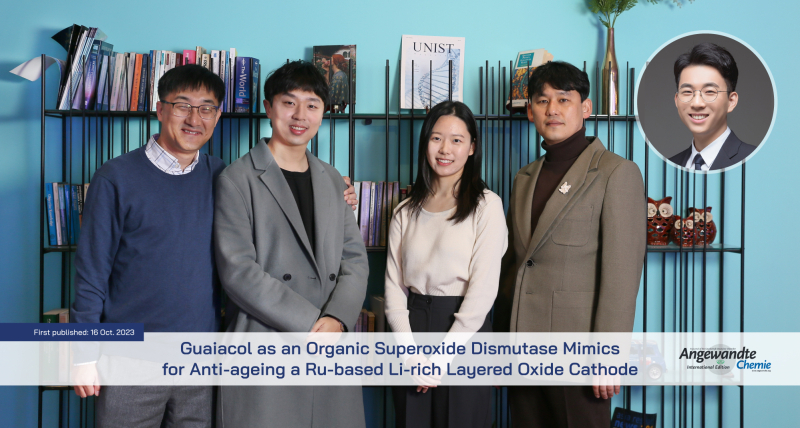A research team, jointly led by Professor Hyun-Kon Song and Professor Hyun-Wook Lee in the School of Energy and Chemical Engineering at UNIST has achieved a significant milestone in battery technology. They have developed a groundbreaking electrolyte additive called Guaiacol, which acts as an organic superoxide dismutase mimic. This remarkable discovery addresses the challenge of structural instability faced by high-capacity Li-rich layered oxides during oxygen redox and transition metal redox processes.
The use of Li-rich layered oxides has long been hindered by the escape of lattice oxygen during oxygen redox, leading to electrolyte decomposition through reactive oxygen species. However, Guaiacol, an organic superoxide dismutase mimic, has emerged as a game-changing solution. By effectively scavenging superoxide radicals through dismutation or disproportionation, Guaiacol converts these radicals into peroxide and dioxygen. It accomplishes this by absorbing lithium superoxide on its partially negative oxygen of methoxy and hydroxyl groups. Furthermore, Guaiacol decomposes to form a thin and stable cathode-electrolyte interphase (CEI) layer, thereby enhancing interfacial stability.
The research team’s achievement holds immense promise for the stable production of large-capacity batteries at affordable costs. By eliminating unstable free oxygen, Guaiacol acts as an antioxidant, similar to its role in slowing down aging in the human body. Notably, the cost of producing Guaiacol is approximately 1/350th compared to the previously announced inorganic antioxidant additive (MA-C60), making it an economically viable solution.
As the demand for electric vehicles and high-capacity energy storage devices continues to rise, the quest for high-capacity anodes has gained significant momentum. While existing high-capacity anodes offer increased capacity, their short lifespan poses a major drawback. The generation of free oxygen during battery charging and discharging significantly degrades battery performance, leading to electrolyte decomposition and material dissolution.
The research team’s focus on antioxidants has yielded remarkable results. By transforming phenolic antioxidants into additives for lithium-ion batteries, they have developed Guaiacol, a catalyst that mimics antioxidants. Through a series of chemical reactions, Guaiacol efficiently removes free oxygen, thus preventing detrimental reactions caused by its presence.
When added in a small quantity (0.3 wt %) to the electrolyte, Guaiacol effectively reacts with free oxygen, preventing electrolyte solvent decomposition. During the initial charge, it forms a protective film on the anode, maintaining the structural integrity of the battery. Comparative tests demonstrated that Guaiacol retains up to 80% of the capacity compared to conventional electrolytes, enabling the battery to be used approximately four times longer (equivalent to around 65 charge/discharge cycles). Impressively, Guaiacol exhibited a high capacity retention rate of up to 70% even after 200 charge/discharge experiments.
“This research marks the first time an electrochemical analysis method has been used to compare the antioxidant properties of phenol and Guaiacol, an unequal catalyst,” noted Jeongin Lee (School of Energy and Chemical Engineering, UNIST), the first author of the study. “It will greatly contribute to the future development of molecular structures for controlling free oxygen in batteries.”
Professor Song emphasized the significance of Guaiacol, stating, “As the first organic antioxidant additive for ruthenium-based lithium excess anodes, Guaiacol follows the antioxidant enzyme-mimicking catalytic properties of previously announced inorganic antioxidant additives (MA-C60).” He added, “Its application extends beyond lithium excess anodes to other high-capacity anodes plagued by free oxygen-related issues, thereby improving electrochemical properties.”
The research, published in the November 2023 issue of Angewandte Chemie International Edition, a prestigious journal in chemistry, was supported by the National Research Foundation of Korea (NRF), the Ministry of Science and ICT (MSIT), and Samsung SDI.
Journal Reference
Jeongin Lee, Dr. Min-Ho Kim, Prof. Hosik Lee, et al., “Guaiacol as an Organic Superoxide Dismutase Mimics for Anti-ageing a Ru-based Li-rich Layered Oxide Cathode,” Angew. Chem., Int. Ed., (2023).












